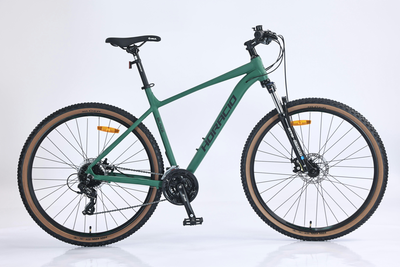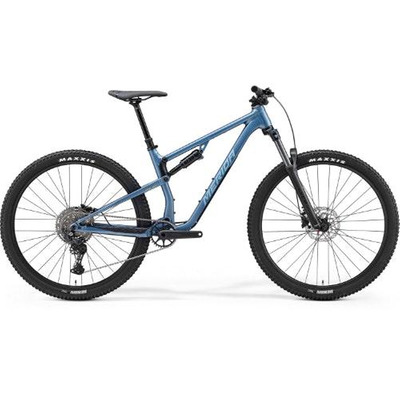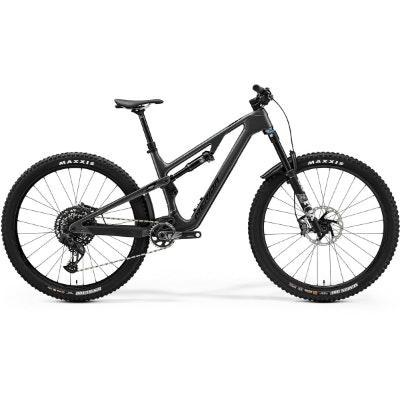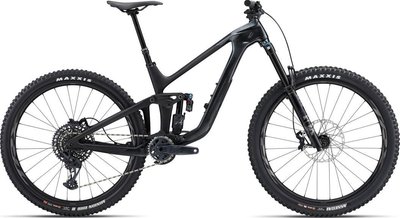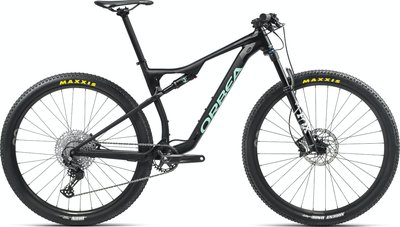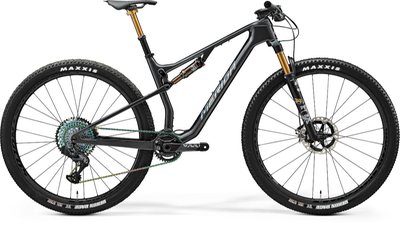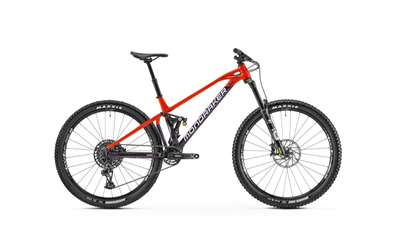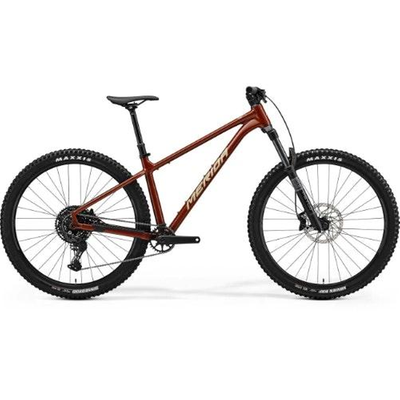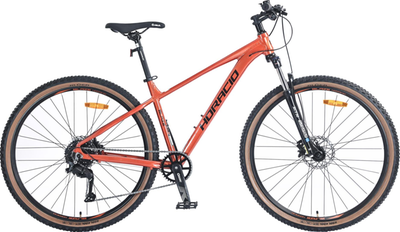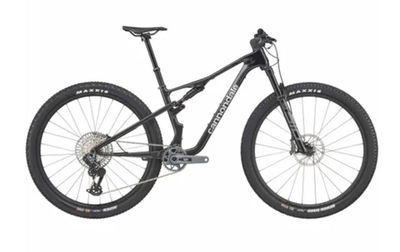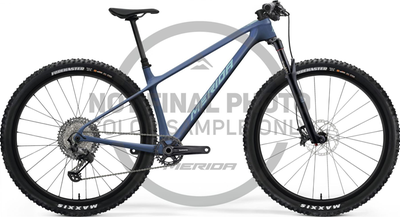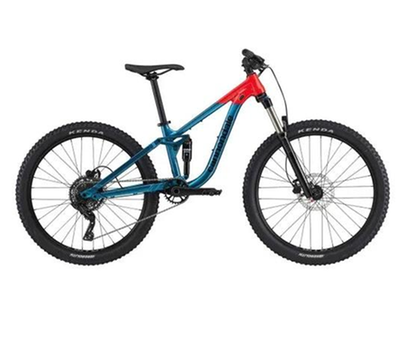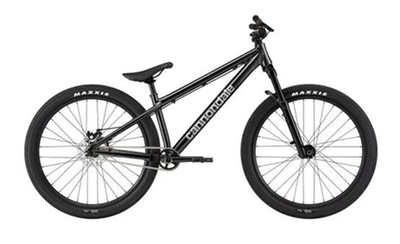
Comparing Drivetrain Components from Shimano & SRAM
Mountain biking demands precision, durability, and performance from every component of your bike. At the heart of these components is the drivetrain, a crucial system that determines how efficiently your power translates to forward motion. In this guide, we'll break down the essential components of a mountain bike drivetrain and explore the latest offerings from industry leaders SRAM and Shimano.
Top Mountain Bikes on Sale
Show allWhat is a Mountain Bike Drivetrain?
The drivetrain is a collection of parts that transfers power from the rider’s legs to the bike’s wheels. It consists of several key components:
1. Crankset
Cranks:
The arms attached to the pedals.
Chainrings:
The gears attached to the crankset. Modern mountain bikes often feature single chainring setups (1x) for simplicity and reliability.
2. Bottom Bracket
The bearing system that allows the crankset to rotate smoothly.
3. Chain
A loop of metal links that transfers power from the chainring to the cassette.
4. Cassette
A cluster of sprockets attached to the rear hub, providing different gear ratios.
5. Derailleurs
Front Derailleur:
Moves the chain between chainrings (if using a multi-ring setup).
Rear Derailleur:
Shifts the chain across the cassette.
6. Shifters
Mechanisms located on the handlebars that control the derailleurs.

No idea what kind of bike is the right one?
You have no idea where to start looking for your new bike? Then simply ask our Bike Consultant - find your new dream bike in four simple steps.
SRAM Drivetrain Offerings
SRAM is renowned for its innovative and robust drivetrain systems. Here are some of their top mountain bike drivetrain groups:
1. SRAM Eagle Series
XX1 Eagle:
Designed for top-tier performance with lightweight materials and advanced technology. It features a 12-speed cassette with a wide gear range.
X01 Eagle:
Offers similar performance to the XX1 but with more durable materials, making it suitable for aggressive trail riding.
GX Eagle:
A more affordable 12-speed option that balances performance and cost, ideal for most mountain bikers.
NX Eagle:
Provides a cost-effective entry into the world of 12-speed drivetrains, compatible with a wide range of bikes.
2. SRAM AXS Series
XX1 Eagle AXS, X01 Eagle AXS, and GX Eagle AXS:
Wireless electronic shifting systems that offer precision and reliability, with the convenience of no cables.
3. SRAM T-Type Series
XXSL, XX, X0, and GX:
Introduced in 2023, SRAM unveiled their state-of-the-art T-Type, or Transmission, lineup. Designed for bikes utilizing the SRAM UDH (Universal Derailleur Hanger) standard, T-Type drivetrains take the lightning-fast technology from AXS into a robust package that has the ability to withstand even the most significant impacts. Plus, in the rare event that it does brake, T-Type derailleurs are fully modular, allowing for easy replacement.
Shimano Drivetrain Offerings
Shimano is another powerhouse in the cycling world, known for its precision engineering and reliable performance. Here are some of their leading mountain bike drivetrain groups:
1. Shimano XTR
Shimano's top-tier offering, designed for professional racers and serious enthusiasts. It features a 12-speed system with advanced shifting technology and lightweight materials.
2. Shimano XT
A high-performance 12-speed drivetrain that brings much of the XTR’s technology to a broader audience, balancing performance and durability.
3. Shimano SLX
An affordable 12-speed drivetrain that offers excellent performance for everyday riders, making advanced technology accessible to more cyclists.
4. Shimano Deore
A versatile 12-speed drivetrain that provides reliability and performance at a budget-friendly price, perfect for new and experienced riders alike.
Choosing the Right Drivetrain
When selecting a drivetrain, consider your riding style, terrain, and budget. SRAM and Shimano both offer exceptional options across different price points and performance levels. Here are a few tips to help you decide:
For Competitive Racing:
Consider SRAM XX1 Eagle, SRAM XXSL, or Shimano XTR for their top-of-the-line performance and lightweight construction.
For Aggressive Trail Riding:
SRAM X01 Eagle, SRAM X0 or Shimano XT offer durability and reliability without compromising on performance.
For Budget-Conscious Riders:
SRAM NX Eagle or Shimano Deore provide excellent value and performance for everyday riding.
Conclusion
The drivetrain is the heart of your mountain bike, and choosing the right one can significantly enhance your riding experience. Whether you opt for the innovative SRAM Eagle series or the precision-engineered Shimano drivetrains, both brands offer a range of options to suit every rider's needs. Explore our selection at BikeExchange and find the perfect drivetrain to power your adventures.
Latest Mountain Bike Models
Show allSRAM

SRAM has multiple mountain bike groupsets available, and in many ways is the more progressive company in the mountain bike sector with having first introduced 2x and then 1x drivetrains to the mainstream mountain bike world.
SRAM’s groupsets are not as clearly defined as Shimano’s and so mixing and matching of components is typically found at the lower end. SRAM is fast moving toward 1x-specific drivetrains on nearly all of its intermediate to premium groupset options. Assuming the number of gears match, SRAM parts are typically interchangeable between series.
Shifting with SRAM comes in two styles – trigger shifter or grip shift. Grip shift, which literally works by twisting the handlebar grip to shift is where SRAM started but isn’t as popular these days and isn’t found stock on new bikes – although it’s readily available as an aftermarket option. Trigger shifting is now the standard choice for SRAM users and works similar to Shimano’s Rapid Fire system, but your thumb operates both levers with a push. It was SRAM’s system that prompted Shimano to add the option of thumb operation on its more expensive shifters, such a design allows shifting in both directions and brake control at the same time.
Below is a basic breakdown of SRAM's groupsets. Mentioned below are the models you’re likely to find on 2017 model bikes, SRAM still offers other, older, options too.
X5:
This entry-level groupset from SRAM features both 9 and 10-speed options and two or three chainrings. X5 components are rarely seen as a complete groupset, but the parts are commonly found on basic hardtails.
X7:
This groupset was once a staple on intermediate hardtails and entry-level dual suspension bikes. It offers dependable trail performance on a tight budget. The groupset now is mostly found in a 10-speed setup with two chainrings (2x10). X7 is SRAM’s entry into offering a clutch-equipped rear derailleur for additional chain security. Many bikes that would have previously used X7 are now using SRAM’s 1x11 ‘NX’ groupset for 2017.
X9:
Building on the features of X7, X9 introduces more aluminium and higher-end steels. X9 is commonly setup as 2x10 and was once a popular groupset for intermediate mountain bikes. For 2017, SRAM NX and GX is far more commonly seen for where X9 once was.
NX:
One of SRAM’s newest, NX is the lowest price entry into a 1x specific drivetrain on the market. Designed to imitate the function and features of more expensive options, 11-speed SRAM NX offers a 11-42T cassette for a wide range. This cassette is a big part of the cost savings over more expensive 1x groupsets as it fits onto a standard hub, whereas more premium 1x SRAM cassettes require a special ‘XD Driver’ hub body to host a wider-range 10-42T cassette, such a component is part of the rear hub and so often requires a more expensive wheel too.
GX:
GX confusingly overlaps closely with X7, X9 and X1. For this, GX is offered in four variants: 1x7, 1x11, 2x11 and 2x10. It’s the 1x11 version of GX most commonly equipped, and the group introduces the use of a wide-range 10-42T cassette along with a greater use of aluminium components (like X9 and X1). The limited range of the 1x7 option is designed for downhill racing.
X1:
First introduced in 2015, X1 has now been commonly replaced with SRAM GX 1x11 on many bikes for 2017. X1 is a fully featured 1x-specific groupset with components featuring aluminium construction and a proven track record for being capable of serious abuse. X1 offers similar shift performance to more expensive groupsets but at a higher weight. X1 is a tad lighter than GX.
XO1:
SRAM’s first offering of carbon fibre and a little premium performance, SRAM X01 is a high-end groupset that is 1x-specific and uses a lightweight 11-speed 10-42T cassette. X01 is typically considered SRAM’s pinnacle for trail, Enduro racing and other aggressive riding styles. SRAM X01 is also available in a 1x7 variant which is specifically designed for downhill racers in mind, it’s the groupset SRAM’s sponsored downhill riders use.
XO1 Eagle:
New for 2017, X01 Eagle is the latest version of X01 and moves to a 12-speed setup. Eagle is SRAM’s statement to make front shifting redundant, and the Eagle 10-50T cassette offers an incredible 500% gear range. X01 Eagle is still a premium groupset, it features high-end aluminium, CNC-machined steel and carbon fibre construction – it’s designed as the pinnacle for Enduro racers and trail riders.
XX1:
Where X01 is SRAM’s finest for the Enduro and trail riders, XX1 takes it a notch above for the cross-country riders and racers counting grams. The differences between X01 and XX1 are subtle, but the scales don’t lie. XX1 was SRAM’s first 1x-specific 11-speed groupset. It uses a 10-42T cassette.
XX1 Eagle:
SRAM’s latest and most premium groupset, XX1 Eagle shares all the same features as the 12-speed X01 Eagle groupset but saves weight at every possible corner for a groupset that’s aimed at the cross country racer or trail rider seeking the very lightest, wide-range 1x groupset on the market. XX1 Eagle was the groupset used by teammates Nino Schurter and Jenny Rissveds in their 2016 Olympic Gold Medal successes.

